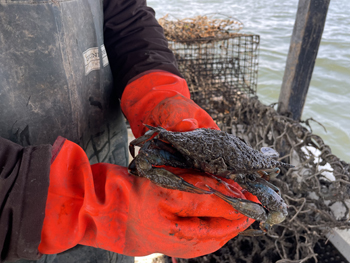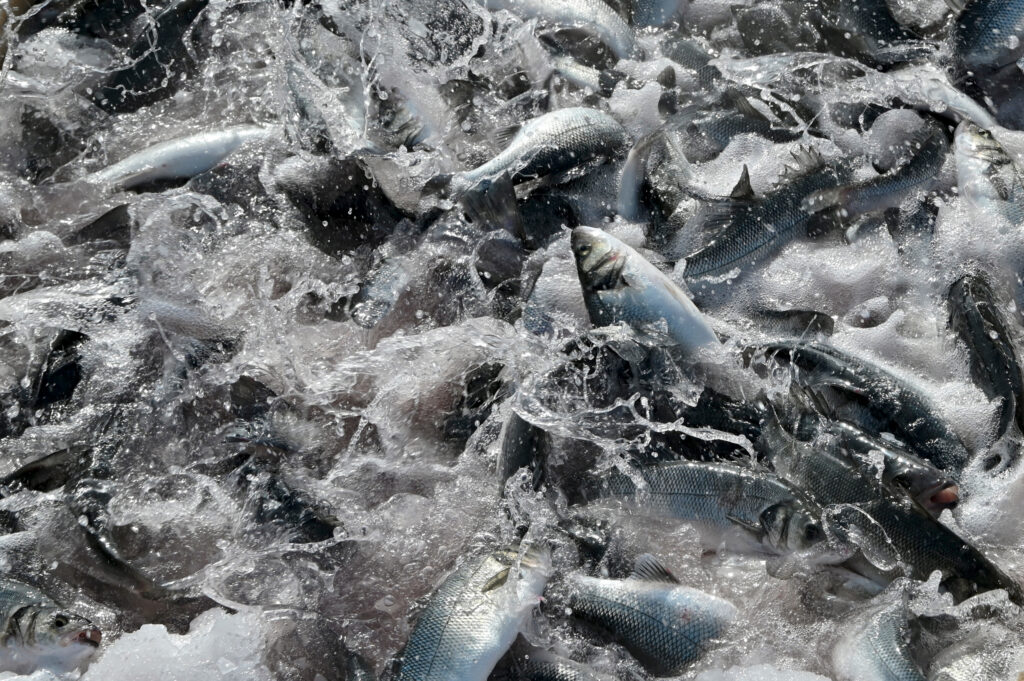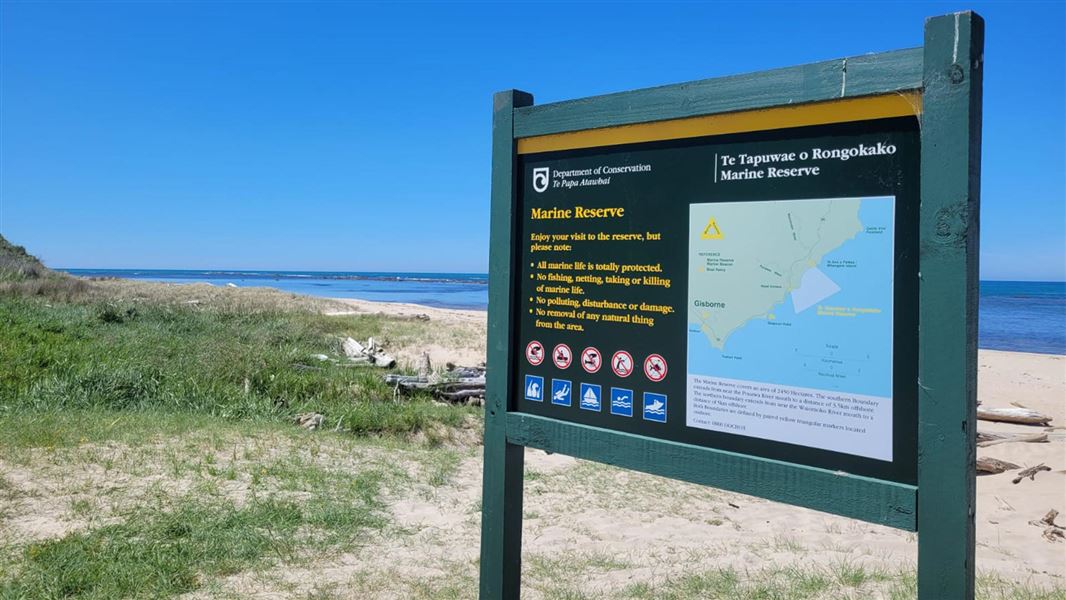National TRAP Program targets ghostly issue with second round of coastal clean up funding – W&M News

National Initiative to Mitigate Derelict Fishing Gear and Advance Sustainable Development Goals
Introduction: Addressing Marine Debris in Line with SDG 14
Derelict fishing gear, commonly referred to as “ghost traps,” presents a significant threat to marine ecosystems, undermining efforts to achieve Sustainable Development Goal 14 (Life Below Water). This abandoned equipment continues to capture marine life, damage critical habitats, and contribute to marine pollution. In response, William & Mary’s Batten School of Coastal & Marine Sciences & VIMS has awarded $1.8 million to 13 U.S. organizations through the National Fishing Trap Removal, Assessment and Prevention (TRAP) Program. This initiative directly supports the conservation and sustainable use of marine resources by targeting a key source of environmental degradation and economic loss.
Economic and Environmental Impact Analysis
The economic and environmental consequences of derelict fishing gear are substantial, directly impacting SDG 8 (Decent Work and Economic Growth) and SDG 14.
- Economic Viability: Commercial trap fisheries in the United States generate over $1 billion in annual landings. A 2016 report indicated that removing just 10% of derelict crab and lobster traps could increase global landings by an estimated $831 million annually, enhancing the economic sustainability of coastal communities.
- Environmental Degradation: Ghost traps cause indiscriminate mortality of both target and non-target species, including endangered species, thereby threatening marine biodiversity (Target 14.2). They also inflict physical damage on sensitive marine habitats.
The National TRAP Program: A Framework for Sustainable Action
Administered by the Batten School & VIMS with an $8 million, four-year grant from the National Oceanic and Atmospheric Administration’s (NOAA) Marine Debris Program, the TRAP Program exemplifies SDG 17 (Partnerships for the Goals). It unites academia, government, and local communities to achieve common objectives.
Program Achievements and Projections
- Inaugural Year (2023-2024): Over $1.4 million was awarded to 11 projects, resulting in the removal of more than 7,000 derelict traps, equivalent to over 300,000 pounds of marine debris.
- Second Year (2025-2026): The current $1.8 million funding round supports 13 projects. The anticipated outcomes include:
- Removal of over 8,000 additional ghost traps.
- Creation of 195 jobs, primarily for commercial fishers, contributing to SDG 8 by providing off-season income and promoting sustainable livelihoods.
- Data-Driven Policy: A standardized national database is being developed in partnership with the University of Georgia’s Carl Vinson Institute of Government. This will evaluate the environmental and economic benefits of removal efforts and inform future policies for prevention and mitigation, aligning with targets for reducing marine pollution (Target 14.1) and managing marine ecosystems sustainably (Target 14.2).
Funded Projects for 2025-2026
The following 13 projects were selected to execute regional cleanup efforts, contributing to national sustainability targets:
- Hill Fisheries LTD ($148,622): To remove derelict American lobster traps in Massachusetts, mitigating entanglement risks for marine species, including the endangered North Atlantic right whale.
- Benioff Ocean Science Lab, University of California, Santa Barbara ($116,433): To remove lost spiny lobster traps from ecologically-sensitive areas within the Channel Islands National Marine Sanctuary.
- South Carolina Department of Natural Resources ($125,493): To identify and remove derelict blue crab traps across four estuarine areas in South Carolina.
- Ocean Aid 360 ($150,000): To mobilize commercial fishers and volunteers to remove derelict spiny lobster and stone crab traps in the Florida Keys, measuring resource and economic benefits.
- Commercial Fisheries Research Foundation ($133,172): To remove ghost American lobster traps in Narragansett Bay and estimate reaccumulation rates to inform future removal strategies.
- Tolowa Dee-ni’ Nation ($140,448): To remove derelict Dungeness crab traps in Northern California, restoring marine habitats and promoting responsible resource management (SDG 12).
- Oyster Recovery Partnership ($147,571): To remove derelict blue crab traps from the Chesapeake Bay, providing off-season income for local watermen and recycling opportunities for recovered gear (SDG 8 & SDG 12).
- Haskin Shellfish Research Laboratory, Rutgers University ($149,168): To remove derelict blue crab traps in Delaware Bay and pilot recycling and prevention strategies, creating a circular economy model for recovered materials.
- Northwest Straits Foundation ($150,000): To clear approximately 3,980 acres of marine debris from Dungeness crab trap removal in Washington’s Port Angeles Harbor and Sequim Bay.
- OceansWide ($135,751): To locate and remove large aggregations of derelict lobster traps in Midcoast Maine, reducing risks to active fishing and navigation.
- City of Beverly, Massachusetts ($124,700): To support a multi-stakeholder coalition in removing derelict lobster traps from Beverly Harbor.
- National Marine Sanctuary Foundation ($146,553): To remove derelict spiny lobster and stone crab traps from the Florida Keys National Marine Sanctuary, collecting data to support informed management of critical habitats.
- Gulf of Maine Lobster Foundation ($149,980): To utilize the expertise of rural Maine fishermen to target and remove derelict fishing gear, documenting the efficiency of engaging active fishers in conservation efforts.
1. Which SDGs are addressed or connected to the issues highlighted in the article?
The article on the National Fishing Trap Removal, Assessment and Prevention (TRAP) Program addresses several Sustainable Development Goals (SDGs) by focusing on marine conservation, economic stability for fishing communities, and collaborative action. The primary SDGs connected to the issues are:
- SDG 14: Life Below Water: This is the most central SDG, as the entire article focuses on mitigating the negative impacts of “ghost traps” on marine ecosystems. The program aims to remove marine debris, protect marine life from entanglement and death, and restore habitats damaged by derelict fishing gear.
- SDG 8: Decent Work and Economic Growth: The article connects the environmental issue of ghost traps to the economic health of the fishing industry. It highlights the economic losses caused by these traps and the economic benefits of their removal. Furthermore, the program directly supports job creation, particularly for commercial fishers during their off-season.
- SDG 12: Responsible Consumption and Production: The problem of derelict fishing gear is a waste management issue stemming from production activities (commercial fishing). The program addresses this by promoting the removal, recycling, and reuse of this waste, thereby contributing to more sustainable practices within the fishing industry.
- SDG 17: Partnerships for the Goals: The article exemplifies a multi-stakeholder partnership approach to solving a complex environmental problem. It describes a collaboration involving a federal government agency (NOAA), academic institutions (W&M’s Batten School & VIMS, University of Georgia), and numerous local organizations, foundations, and commercial fishers working together to achieve a common goal.
2. What specific targets under those SDGs can be identified based on the article’s content?
Based on the article’s content, several specific targets under the identified SDGs can be identified:
-
SDG 14: Life Below Water
- Target 14.1: By 2025, prevent and significantly reduce marine pollution of all kinds, in particular from land-based activities, including marine debris and nutrient pollution. The program’s core mission is to remove derelict fishing gear, which is a significant source of marine debris. The article states the program’s efforts have resulted in “the removal of over 7,000 derelict traps totaling more than 300,000 pounds of debris.”
- Target 14.2: By 2020, sustainably manage and protect marine and coastal ecosystems to avoid significant adverse impacts. The projects funded by the TRAP program directly work to protect marine ecosystems. For example, the Benioff Ocean Science Lab’s project aims to remove traps from “ecologically-sensitive areas in the Channel Islands National Marine Sanctuary,” and the Tolowa Dee-ni’ Nation’s project focuses on restoring “marine and intertidal habitats critical to native species.”
- Target 14.4: By 2020, effectively regulate harvesting and end overfishing, illegal, unreported and unregulated fishing and destructive fishing practices. Ghost traps represent a form of destructive fishing practice that causes unreported mortality of marine species. The article notes that removing this gear “addresses a contributing factor to recent declines in the lobster catch rate” and reduces the mortality of “both target and non-target species.”
-
SDG 8: Decent Work and Economic Growth
- Target 8.5: By 2030, achieve full and productive employment and decent work for all. The article explicitly states that the second round of projects “anticipate the removal of over 8,000 ghost traps and the creation of 195 jobs, mostly for commercial fishers.” It also mentions that engaging local watermen provides “off-season income.”
-
SDG 12: Responsible Consumption and Production
- Target 12.5: By 2030, substantially reduce waste generation through prevention, reduction, recycling and reuse. The program not only removes waste but also supports its responsible management. The Rutgers University project aims to “pilot recycling and prevention strategies,” and the Tolowa Dee-ni’ Nation will work on “repurposing or recycling material when possible.”
-
SDG 17: Partnerships for the Goals
- Target 17.17: Encourage and promote effective public, public-private and civil society partnerships. The entire structure of the TRAP program is a model of this target. It is funded by a public entity (NOAA), administered by an academic institution (W&M’s Batten School & VIMS), and implemented by a diverse group of civil society and private partners, including foundations, universities, and commercial fisheries.
3. Are there any indicators mentioned or implied in the article that can be used to measure progress towards the identified targets?
Yes, the article mentions several quantitative and qualitative indicators that can be used to measure progress towards the identified targets:
- Amount of Marine Debris Removed: This is a direct indicator for Target 14.1. The article provides specific figures, such as “over 7,000 derelict traps” and “more than 300,000 pounds of debris” removed in the first year, with an anticipated “removal of over 8,000 ghost traps” in the second year.
- Economic Impact on Fisheries: This indicator relates to Target 14.4 and the overall economic health of the fishing industry. The article cites a 2016 report stating that removing 10% of derelict traps “could result in an additional $831 million in global landings annually.” The program’s standardized national database is designed to “evaluate the environmental and economic benefits of the removal efforts.”
- Number of Jobs Created: This is a clear indicator for Target 8.5. The article specifies that the second round of funding is anticipated to lead to the “creation of 195 jobs, mostly for commercial fishers.”
- Area of Habitat Restored/Cleared: This measures progress for Target 14.2. Specific projects provide this data, such as the South Carolina effort to “comprehensively map 64 square kilometers of major waterways” and the Northwest Straits Foundation’s intention to clear “approximately 3,980 acres of marine debris.”
- Amount of Funding Mobilized for Partnerships: This serves as an indicator for Target 17.17. The article details the funding distributed through the partnership: “over $1.4 million to fund 11 projects” in the first year and “$1.8 million in grant funding will be distributed across 13 projects” in the second year.
- Data Collection and Policy Influence: An indicator for increasing scientific knowledge (related to SDG 14.a), the program established a “standardized national database” and analyzes data to “inform state and federal policy recommendations to improve derelict trap prevention and mitigation.”
4. Summary Table of SDGs, Targets, and Indicators
| SDGs | Targets | Indicators |
|---|---|---|
| SDG 14: Life Below Water | 14.1: Reduce marine pollution and debris. | Number of traps removed (7,000+); Weight of debris removed (300,000+ pounds). |
| 14.2: Protect and restore marine and coastal ecosystems. | Area cleared of debris (e.g., 64 sq km, 3,980 acres); Protection of ecologically-sensitive areas (e.g., National Marine Sanctuaries). | |
| 14.4: End destructive fishing practices. | Reduction in mortality of target and non-target species; Data on bycatch collected for national database. | |
| SDG 8: Decent Work and Economic Growth | 8.5: Achieve full and productive employment and decent work. | Number of jobs created (195); Provision of off-season income for fishers. |
| SDG 12: Responsible Consumption and Production | 12.5: Substantially reduce waste generation through prevention, recycling and reuse. | Implementation of recycling/prevention strategies; Repurposing/recycling of recovered materials. |
| SDG 17: Partnerships for the Goals | 17.17: Encourage and promote effective public, public-private and civil society partnerships. | Amount of grant funding distributed ($1.4M, $1.8M); Number of organizations funded (11, 13). |
Source: news.wm.edu
What is Your Reaction?
 Like
0
Like
0
 Dislike
0
Dislike
0
 Love
0
Love
0
 Funny
0
Funny
0
 Angry
0
Angry
0
 Sad
0
Sad
0
 Wow
0
Wow
0



















































.jpg.webp?itok=0ZsAnae9#)
























